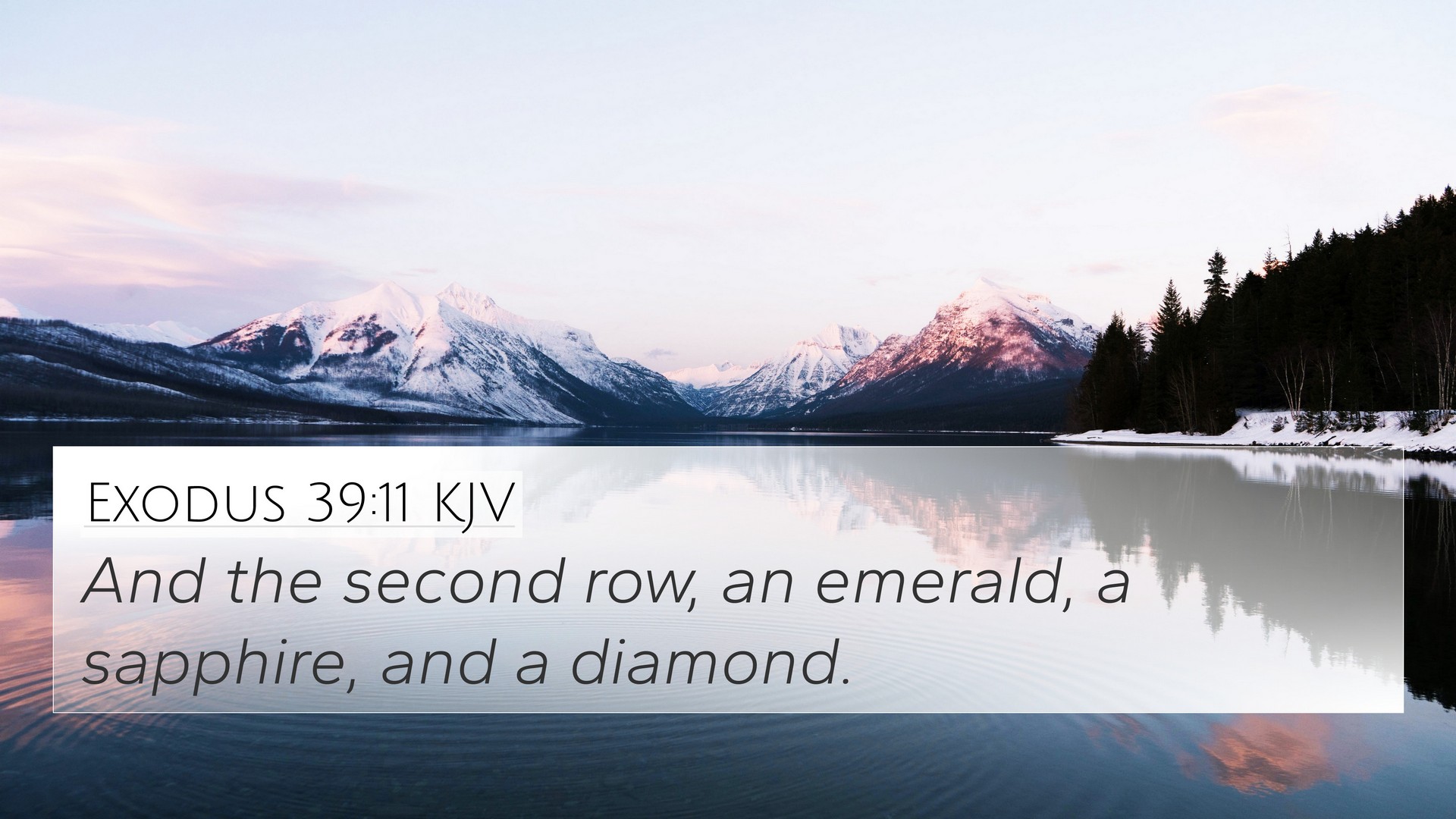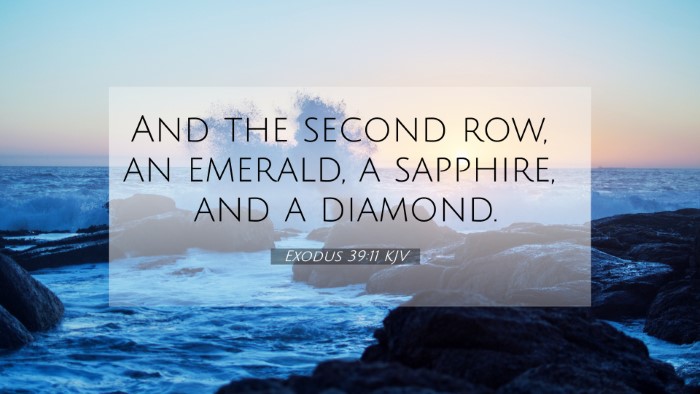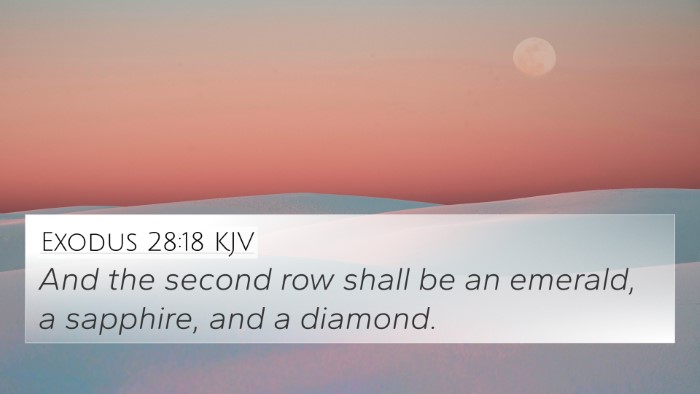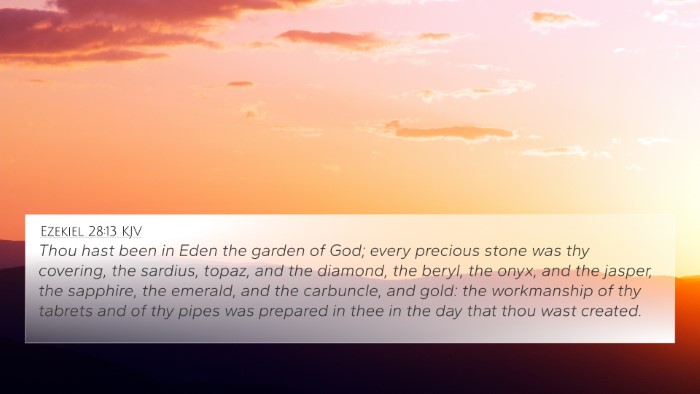Understanding Exodus 39:11
Exodus 39:11 states: "And the second row, a turquoise stone, a sapphire, and a diamond." This verse is part of the detailed description of the garments worn by the high priest, specifically the breastplate of judgement. The high priest's breastplate contained twelve stones, each representing the tribes of Israel, symbolizing their presence before God. Below is a combined insight from prominent public domain commentaries, specifically Matthew Henry, Albert Barnes, and Adam Clarke.
Verse Meaning and Context
The context of Exodus 39 revolves around the construction of the Tabernacle and its furnishings, where God gives Moses specific instructions on how to set up the items used in worship. The sacred garments for Aaron, the high priest, are meticulously described, highlighting their significance in representing the people of God before Him.
Commentary Insights
- Matthew Henry: Henry emphasizes the importance of the high priest’s garments, which signify holiness and the need for divine mediation. The stones are representative of the tribes' varied natures and their unique relationship with God.
- Albert Barnes: Barnes notes that the breastplate not only serves a ceremonial function but also illustrates the high priest's role as a mediator. The stones are intricately designed and crafted, reflecting both beauty and significance in representing each tribe's place before God.
- Adam Clarke: Clarke highlights the symbolism of each stone, underscoring their connections to the tribes of Israel. The turquoise, sapphire, and diamond reflect qualities like beauty, prosperity, and spirituality, suggesting that God's people are uniquely cherished and adorned.
Thematic Connections and Cross-References
Exodus 39:11 presents rich thematic connections throughout the Scriptures. Here are several cross-references that illustrate the connections between Bible verses:
- Exodus 28:17-21: This passage provides additional descriptions of the breastplate and the significance of the twelve stones linked to the tribes of Israel.
- Revelation 21:19-20: The New Jerusalem is described as having its foundations adorned with various precious stones, reminiscent of the high priest's breastplate.
- 1 Peter 2:9: Believers are described as a 'royal priesthood', indicating the ongoing priestly role in representing God's people.
- Hebrews 4:14-16: Jesus is presented as our high priest, reflecting the fulfillment of the priestly duties established in the Old Testament.
- Isaiah 54:11: The imagery of precious stones is used to depict God's promises and the beauty of His people, which resonates with the symbolism of the stones in the breastplate.
- Malachi 3:17: The Lord affirms His prized possession, emphasizing the importance of the relationship between God and His people.
- Matthew 5:14: Believers are referred to as a light to the world, underlining the theme of being a chosen and distinct people.
Techniques for Cross-Referencing
To gain deeper insights into Exodus 39:11 and to identify related verses, various tools can be utilized:
- Bible Concordance: A comprehensive index that helps locate words and their occurrences across biblical texts.
- Bible Cross-Reference Guide: Resources that outline relationships between scriptures, enhancing comparative Bible verse analysis.
- Scripts for Thematic Bible Studies: Approaches that focus on themes and assist in linking Bible scriptures across both Testaments.
- How to Use Bible Cross-References: Techniques including thematic studies and contextual analyses help in interpreting connections.
Conclusion
In understanding Exodus 39:11, it becomes clear that the significance of the high priest's garments extends beyond mere ornamentation. It embodies the intercessory role of the priest as well as the sacredness of God's relationship with Israel. By exploring cross-referenced verses, readers can appreciate the rich tapestry that connects various biblical themes, ultimately enhancing their understanding of scripture.




